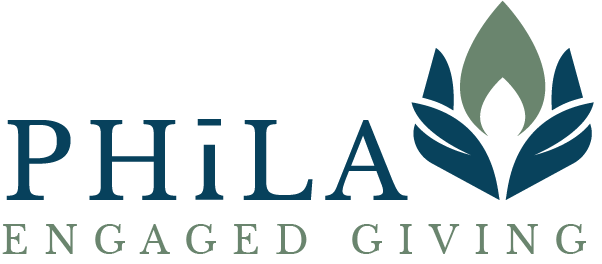Lauren Janus, COO and Philanthropic Advisor at Phīla Giving
A year ago this month, the world felt like an incredibly tense place.
George Flyod had just been murdered, on camera, at the hands of white police officers in Minnesota. With no vaccine and uneven testing capabilities across the country, COVID rates were raging while medical experts issued daily warnings of the deadly summer ahead. It wasn’t exactly the sort of atmosphere that made you want to stretch out in your lawn chair, pour a cool drink and delve into the latest crime novel.
Instead, in my “summer reads” blog post last June, I recommended a handful of excellent books that dig deep into the issues of race, poverty and inequality laid bare to us all in the past year. I still strongly recommend all of these books not only because of their subject matter, but also because each of them is highly readable and engaging--not quite beach reads, but close enough to make you think differently and want to pass along a copy to a friend.
While it still feels audacious to even suggest that this summer could be more normal than last, expanding vaccination rates and decreasing COVID deaths do make it feel less scary. I’ve been using this new breathing space to take a step back and focus on the broader beauty in the world, including the power of individuals to move the needle on social justice, family relations and a more just and loving version of humanity.
If you’re in a similar frame of mind as the weather warms, here are some of my top book recommendations:
A Hope More Powerful Than the Sea: One Refugee's Incredible Story of Love, Loss, and Survival, by Melissa Fleming
It’s difficult to argue that any refugee’s story is not harrowing. But Doaa Al Zamel’s is truly incredible. Doaa is just a teenager when her fiance convinces her that the two of them should flee Syria for Europe after passing their life savings over to smugglers with a rickety boat. When the boat capsizes, Doaa (who cannot swim) floats for days on an inflatable tube clutching two toddlers, who were thrust into her arms by their drowning parents. Doaa’s story ends well, but its glimpse into the astonishing bravery, love and sheer grit of today’s refugees will stick with you.
Interpreter of Maladies, by Jhumpa Lahiri
I first read Interpreter of Maladies nearly 15 years ago, not long after it was published and won the Pulitzer Prize. While this time around I remembered many of the stories in this short compilation written by the now famous Jhumpa Lahiri, every single one of them struck me anew for their achingly rich storytelling. Lahiri excels at telling stories of relationships--between lovers, family members and neighbors both in the U.S and in India. Not all of her characters behave well toward each other, but each of them needs each other in a very human way. Try stopping at just one of her stories in this short read.
Empire of Pain: The Secret History of the Sackler Dynasty, by Patrick Radden Keefe
No, I’m not suggesting that the Sackler family represents a beautiful sort of humanity to be celebrated in these challenging times. Quite the contrary. Patrick Radden Keefe’s 2021 expose on the Sacklers is shocking, engrossing and peppered with moments of pure ickiness. The way members of the elder and younger Sackler clan have used their wealth and personalities to manipulate nonprofits, government officials and the American public to further swell the family’s coffers is increasingly horrifying as the generations replace each other. The bright light of this story is Nan Goldin, the 60-something photographer who spear-headed the first protests against the Sackers inside the museums (the Guggenheim, Smithsonian, the Met) which have accepted the family’s donations for decades.
Keefe explains how Goldin, who herself suffered from an addiction to OxyContin, organized fellow artists, students and victims of the opioid epidemic to drop empty prescription bottles on the floor of the Guggenheim lobby and stage a subsequent ‘die-in.’ Her efforts worked, finally drawing a bright light to the unfettered greed and morally abhorrent behavior of the Sackler family.
The Purpose of Power: How We Come Together When We Fall Apart, by Alicia Garza
Alicia Garza’s recent book is a similarly inspiring, authentic story of the power of the individual. Garza is the woman behind the original #BlackLivesMatter hashtag, and co-founder of the Black Lives Matter movement. In her 2020 book, Garza describes her childhood as one of only a few Black children in a predominantly white, upper-middle class neighborhood, and her entry into the world of community organizing following college. What makes Garza’s arguments so welcome in these divisive times, is her insistence that movements like Black Lives Matter are successful when they are accessible to everyone who, like her, are striving to move our country--and arguably all of humanity--progressively forward.
Happy reading!















